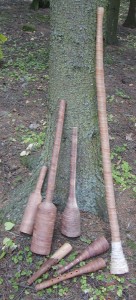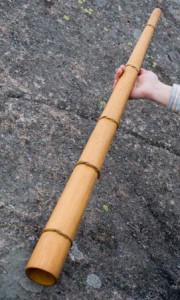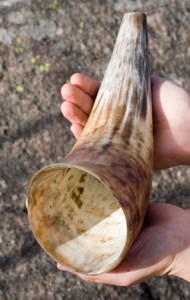The pipes and horns had several purposes in Finland, Karelia and Ingria in the old times. Actually, they were used in many parts of life. The customs varied depending on the area and time, which makes this presentation a collection of local habits here and there, not any kind of general truth.
As the industries developed, people got wealthier and new influences were adopted at the countryside, these self-built instruments started to lose their significance. In the eastern periferia people still used horns in the beginning of 20th century. In the western Finland the old music and instruments had mostly been replaced by new ones.
1. Animal husbandry: Shepherds
– Before time of fenced pastures in the late 19th century, shepherds collected the cattle which they were responsible of and took the animals into forests to eat, avoiding the private areas. Leading the cattle and scaring the beasts was carried out with the whip and the horn. In the evening shepherds returned the cattle to housewives for milking.
the animals into forests to eat, avoiding the private areas. Leading the cattle and scaring the beasts was carried out with the whip and the horn. In the evening shepherds returned the cattle to housewives for milking.
– For many centuries ago the wild beasts were a real threat for the cattle, which demanded men-shepherds. After effective hunting, the last centuries of shepherding the job could be easily done by the young children, women and elderly. Even the Swedish-Finnish Parliament agreed that men weren’t allowed to work as shepherds anymore.
– Some shepherds made, in addition to whisks and other things, musical instruments and played them when the cattle didn’t need any attention. They spent time and expressed loneliness and other feelings. Music was improvised, instruments were short-lived and tuned in random scales. Sometimes shepherds called for each other with horns, to get help or company, eventually to contest upon whose horn sounded the loudest.
– Shepherds and, cow- and horse herds were valued differently depending on the value of the animal and on demands of the work. In Ingria the occupation of shepherd was learned as an assistant. Children who took care of sheep didn’t have the strength to play horns, so they often played flute, which was therefore often called as a shepherd’s flute. In Ingria, herds used horse horns still in the beginning of the 20th century.
– Musically skilled shepherds pla yed not only at their own leaving-party in the autumn, but also dance music at wedding parties.
– Magic and traditions dealing with husbandry varied. The most common habit in the old times was that the housewife let out cattle ceremonially in the spring. In Karelia some mighty shepherds made a deal with the forest elf of protecting the cattle, which also made the shepherd’s horn magic al.
Listen to a Finnish folk melody I made a pipe of willow wood, which I play with a shepherd flute
2. Other sources of livelihood
– When a tar grave was lighted, the responsible person, grave master played gravehorn. Every tar grave in villages used to be lighted in the same, calm evening, which generated musical sounds here and there. The same horns were played if the fire got out of grave masters control.
– The housewife called workers from fields to eat by playing cowhorn.
– Vepsian boys and men used to play wooden luttu-clarinets when they were about to harvest potatoes for preventing evil.
– Fishers and others in archipelago gave signals to each other with foghorns.
– Hunters have used various pipes and horns to attract fowl, wild ducks, swans and foxes.
– Forestry workers made little clarinets of cigarette holders.
– Firemen in Ostrobothnia played hooptrumpets to get help in putting out fires eventually during 1200–1800. It has been said that fire guardians in the wooden cities played a signal every hour to inform if everything was ok.
– It is said that the Livonians used to have guards with horns on hills during wars. With the horns the messages were communicated fast forward.
3. Communality and spirituality
– Big oxhorns were used to alarm of fire or when somebody wanted to call villagers together.
Oxhorns were also used as corpsehorns to call villagers to sing, pray and stay awake where somebody had died.
– Young people called each other together by blowing horn, especially birch bark trumpets were used.
– A religious sect in Western Finland, Ostrobothnia, called congregation to pray together by blowing a certain prayerhorn still in the beginning of the 19th century.
– Stolen church bells were replaced by prayer horns in Southwest Finland.
– In church boats someone played horn to inform arrival ashore.
– It is told that at ancient pagan sacrificial parties men blowed horns when the priests prayed in a grove.
– Eventually in 1200–1800, pagan tradition of The Middle Winter’s horn was adapted in Ostrobothnia, According to it the horn was played to every main compass points during the darkest time of the year to prevent evil.
The tradition exists nowadays locally in Poland and in Netherlands, turned as Christian Christmas tradition.
4. Children’s play and learning
– Children learned from fathers and each others to build various musical instruments. They played with instruments and compared skills. Sometimes an older man played for them and taught instrument building during a pause from work.
instruments. They played with instruments and compared skills. Sometimes an older man played for them and taught instrument building during a pause from work.
